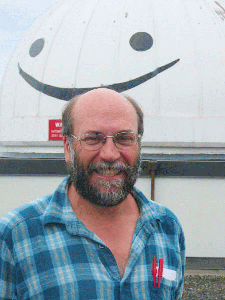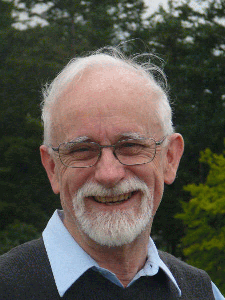The diagram of the position of any asteroid in its orbit can be found at NEO Program
The ephemeris of any asteroid can found here. The UVic Climenhaga Observatory code is 657. Minor Planet Center

This is the orbit of the asteroid named (150145)Uvic.
150145 Uvic
Discovered 1996 Jan. 23 by D. D. Balam at the National Research Council of Canada. The University of Victoria, British Columbia, is widely recognized for leadership in research, inspired teaching and community engagement. It provides innovative programs and real-life learning experiences for its students. It is home to the Climenhaga Observatory, where this minor planet was discovered.

This is the orbit of the asteroid named (100416)Syang.

This is a photo of Stephenson Yang
Discovered 1996 Feb. 2 by D. D. Balam at the National Research Council of Canada. Stephenson Yang (b. 1954) is one of the Canadian pioneers in the search for planetary companions to nearby stars from precise radial velocities. He has contributed to the discovery of two such planets.

This is the orbit of the asteroid named (81915)Hartwick.
81915 Hartwick

This is a photo of David Hartwick
Discovered 2000 July 15 by D. D. Balam at the Dominion Astrophysical Observatory, Victoria. F. David A. Hartwick (b. 1941) is a professor of physics and astronomy at the University of Victoria and a leading authority in the field of galaxy formation and evolution. He is legendary for his encyclopedic knowledge of astronomy.

This a superposition of three JPL/NEAT pictures, which are displayed such that each picture has a different RGB color. The stars are then red+green+blue = white. The asteroid moved between the pictures and shows up as a red, green, blue dots in a line ...

This is the orbit of the asteroid named (60622)Pritchet.
60622 Pritchet
Discovered 2000 Mar. 30 by D. D. Balam at the Dominion Astrophysical Observatory, Victoria. Christopher J. Pritchet (b. 1950) is a professor of physics and astronomy at the University of Victoria and a leading authority in the field of observational cosmology, supernovae, galaxy formation and evolution.

This is also a superposition of three JPL/NEAT pictures. The stars are white and the asteroid is the red, green and blue dots.

This is the orbit of the asteroid named (48774)Anngower.
48774 Anngower
Discovered 1997 Aug. 10 by D. D. Balam at National Research Council of Canada. Ann C. Gower, associate professor of astronomy at the University of Victoria, is an outstanding radio astronomer and gifted teacher who takes a special interest in every student in her classes. She is an active member of the UVic Speakers Bureau, sharing with others her knowledge of galaxies and quasars.

This is a picture of the asteroid named (48774)Anngower. The asteroid is the dot in the middle of all the "trailed" stars (lines).
This is the orbit of the asteroid named (11955)Russrobb.

11955 Russrobb

This is a photo of Russell Robb
Discovered 1994 Feb. 8 by D. D. Balam at the Dominion Astrophysical Observatory, Victoria. Russell M. Robb (b. 1952), astronomer at the University of Victoria, played the leading role in automating the university's 0.5-m telescope and equipping it with a CCD camera. The telescope has been used extensively in the university's observational programs, including astrometric work on comets and minor planets.

This is the picture of the asteroid named (11955)Russrobb. The asteroid is the trail and the stars are round(ish). Ignore the white and black rectangular blotches.

This a superposition of three JPL/NEAT pictures, which are displayed such that each picture has a different RGB color. The stars are then red+green+blue = white. The asteroid moved between the pictures and shows up as a red, green, blue dots in a line... Can you find a second asteroid?
This is the orbit of the asteroid named (29348)Criswick.

29348 Criswick
Discovered 1995 Mar. 28 by D. D. Balam at the Climenhaga Observatory of the University of Victoria. John Criswick (b. 1963) is a University of Victoria alumnus who, as a result of his passion for astronomy, has been an enthusiastic proponent for astronomy education in Canada.

This is the picture of the asteroid named (29348)Criswick. The asteroid is the dot and the stars are "trailed". Ignore the white and black rectangular blotches.

This a superposition of three JPL/NEAT pictures, which are displayed such that each picture has a different RGB color. The stars are then red+green+blue = white. The asteroid moved between the pictures and shows up as a red, green, blue dots in a line ...

This is the orbit of the asteroid named (6532)Scarfe.
6532 Scarfe (1995 AC) Discovered 1995-Jan-04 by Balam, D. D. at Climenhaga Observatory

This is a photo of Colin Scarfe

This a superposition of three JPL/NEAT pictures, which are displayed such that each picture has a different RGB color. The stars are then red+green+blue = white. The asteroid moved between the pictures and shows up as a red, green, blue dots in a line ...

This is the orbit of the asteroid named (3749)Balam.
3749 Balam (1982 BG1) Discovered 1982-Jan-24 by Bowell, E. at Flagstaff (AM) (688)

This is a photo of Dave Balam

This a superposition of three JPL/NEAT pictures, which are displayed such that each picture has a different RGB color. The stars are then red+green+blue = white. The asteroid moved between the pictures and shows up as a red, green, blue dots in a line ...

This is the orbit of the asteroid named (3748)Tatum.
3748 Tatum (1981 JQ) Discovered 1981-May-03 by Bowell, E. at Flagstaff (AM) (688)

This a superposition of three JPL/NEAT pictures, which are displayed such that each picture has a different RGB color. The stars are then red+green+blue = white. The asteroid moved between the pictures and shows up as a red, green, blue dots in a line ...

This is the orbit of the asteroid named (3034)Climenhaga.
3034 Climenhaga (A917 SE) Discovered 1917-Sep-24 by Wolf, M. at Heidelberg (024)

This is a photo of John Climenhaga

This a superposition of three JPL/NEAT pictures, which are displayed such that each picture has a different RGB color. The stars are then red+green+blue = white. The asteroid moved between the pictures and shows up as a red, green, blue dots in a line ...
Send comments/suggestions/problems to robb@
uvic.ca